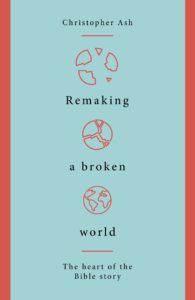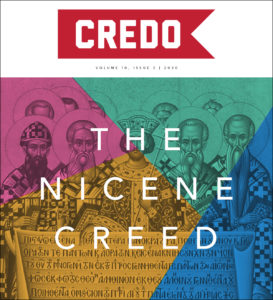As people in the western world gravitate towards greater isolationism, gathering with others in a local church appears to be somewhat outdated. To counter this trend, many resources will provide a defense for the local church th at center on the immediate functional benefits, such as: discipleship, friendship, care and love. In contrast, Christopher Ash takes an ontological approach and explains the purpose behind not just the church, but the gathering of God’s people. In Remaking a Broken World: The Heart of the Bible Story, Ash’s desire is to show his readers how the “ordinary local Christian church contains within itself the seeds, or the DNA, of a remade world” (7).
at center on the immediate functional benefits, such as: discipleship, friendship, care and love. In contrast, Christopher Ash takes an ontological approach and explains the purpose behind not just the church, but the gathering of God’s people. In Remaking a Broken World: The Heart of the Bible Story, Ash’s desire is to show his readers how the “ordinary local Christian church contains within itself the seeds, or the DNA, of a remade world” (7).
The way that Ash shows the priority of gathering with the local church is through an overview of the scriptures. According to Ash, “A Bible overview is a way in to reading the Bible, not a way round. It is like a series of signposts to help us reach a city centre rather than a bypass to make it unnecessary for us to go to the city centre at all” (9). Many have written Bible overviews before with specific themes guiding them, but Ash’s desire is to tell the Bible story “in a way that highlights scattering and gathering” (10). For Ash, scattering will represent God’s judgement, whereas gathering will be a sign of God’s rescue (10). Ash’s desire is to show his readers how the “ordinary local Christian church contains within itself the seeds, or the DNA, of a remade world” Share on X
The signposts for Ash in his overview of the Bible are displayed through four different sections. The first section begins in Eden with God’s people gathered at creation, but then scattered because of their sin. The second section details gathering beginning with Abraham and his promises passed down to Israel, as well as the scattering of God’s Old Testament people into exile. The third section centers on Jesus and the gathering of the church through him. Then, the final section, is about the new creation and the consummation of God’s gathered people forever.
Within the signposts given in Ash’s four sections are themes set within what Ash calls three different acts. Act I is “harmony” and it describes the relationship man had with God and each other. Act I is set in Eden, where “God walks with people” within “the intimate assembly in the garden, between God, the man and the woman” (28). Following Act I is Act II with the “fracture” brought about through sin. This theme is evident from the fall of man in Genesis 3 through the consummation found in the book of Revelation. Following Act II is Act III where God’s promises are fulfilled through his will to “gather together a broken world” that he rebuilds “under one leader, the Lord Jesus Christ” (197).
Throughout this storyline it is evident that there are two cities which represent gathering and scattering. The cities of Babel and Jerusalem are contrasted with each other as Babel continuously represents selfishness and pride verses Jerusalem, which is the one place where “peace was found” (89). Jerusalem is “the place where God lives to gather” (94) making it a place of safety and harmony with the “presence of God and the rule of God’s Christ” (99). Babel, on the other hand, “is a symbol of human autonomy and pride” (43) with results in only scattering and judgment. The contrast then is that one is shaped by the word of God, whereas the other is shaped by the hearts and desires of the human will.
The lynchpin of any biblical storyline is found in Jesus Christ. Ash presents Jesus as the savior who dies in order “to bring together” “the scattered children of God” (142). Jesus overcomes the scattering of Babel as he gathers his people together to ultimately lead them to the New Jerusalem. This is the remaking of a broken world. It is not primarily about individual salvation,
but instead is about the repair of a fractured and scattered humanity who are gathered together in harmony with God and one another, through a King who leads them away from pride and self-autonomy to everlasting peace and joy. Jesus overcomes the scattering of Babel as he gathers his people together to ultimately lead them to the New Jerusalem. Share on X
Remaking a Broken World centers the biblical storyline on the assembly of the people of God within the church showing the desire of God to gather his people to himself in order that they may be remade through his son and brought back into harmony with him and with others. It is a hopeful book that points its readers not to heaven, but to the new creation, where all will be made right with all of God’s people gathered before him. Ash is clear in defending his thesis, he is practical in illustrating his points, and he writes in way that allows his readers to easily grasp the content that he conveys. All who read this book will find deeper insight into the purposes of God, shown through the storyline of the scriptures, as told through the hope that all humanity has to be gathered to God through Jesus Christ.


